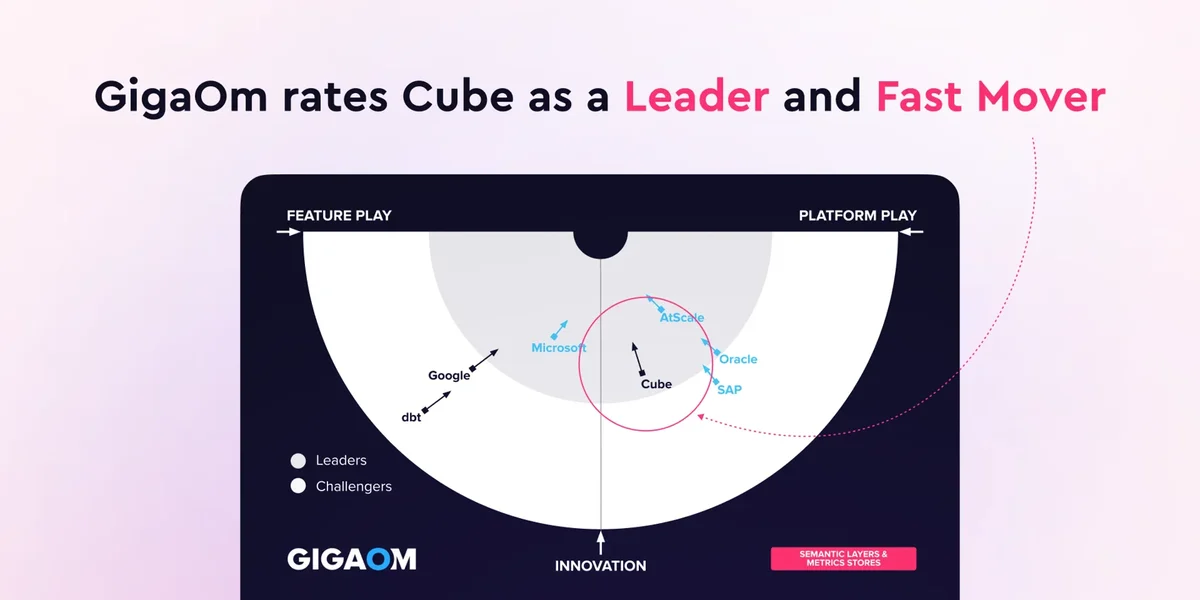The Power of a Semantic Layer: A Data Engineer’s Guide
Looking to understand the semantic layer and how it can improve your data stack? This GigaOm Sonar report on Semantic Layers can help you delve deeper.
Data engineers and data analysts are at the forefront of building and managing the data stack, which means they are at the forefront of wrangling the company‘s data chaos. Data chaos comes from the staggering number of data tools people use and the expectations that those tools generate the same answers (rarely true).
The answer? Leverage a semantic layer to reduce the data chaos.
But why does it matter? The Significance of Semantic Layers
Semantic layers play a pivotal role in data analysis. They act as bridges between raw data and actionable insights, helping organizations harness the full potential of their data. A semantic layer consolidates complex data into an understandable format across different teams and tools, effectively translating raw data into standard business terms.
Read the GigaOm Sonar Report on Semantic Layers
This recently published GigaOm report focuses on emerging technologies and market segments. It helps organizations of all sizes understand new technology, its strengths, its weaknesses, and how it can fit into an overall technology strategy. The report is organized into five sections:
- Overview: An overview of the technology, its major benefits, and possible use cases, as well as an exploration of product implementations already available in the market.
- Considerations for Adoption: An analysis of the potential risks and benefits of introducing products based on this technology in an enterprise scenario. It looks at table stakes and key differentiating features, as well as considerations for how to integrate the new product into the existing environment.
- GigaOm Sonar Chart: A graphical representation of the market and its most important players, focused on their value proposition and their roadmap for the future.
- Vendor Insights: A breakdown of each vendor’s offering in the sector, scored across key characteristics for enterprise adoption.
- Near-Term Roadmap: A 12- to 18-month forecast of the future development of the technology, its ecosystem, and major players of this market segment.
Semantic layers are not standalone entities but complementary components of a powerful data ecosystem. Semantic layers provide the context and structure needed to understand data.
Cube is highlighted in the GigaOm Sonar Report as a Leader and Fast Mover. They noted Cube's strengths to include strong code-first orientation, native API support, and its analytics pre-processing through caching and pre-aggregations.
Get the Full Report and See for Yourself
For a comprehensive look at Cube's performance and a deeper dive into the world of semantic layers, we encourage you to read the complete GigaOm Sonar report. We offer the report here for free.

